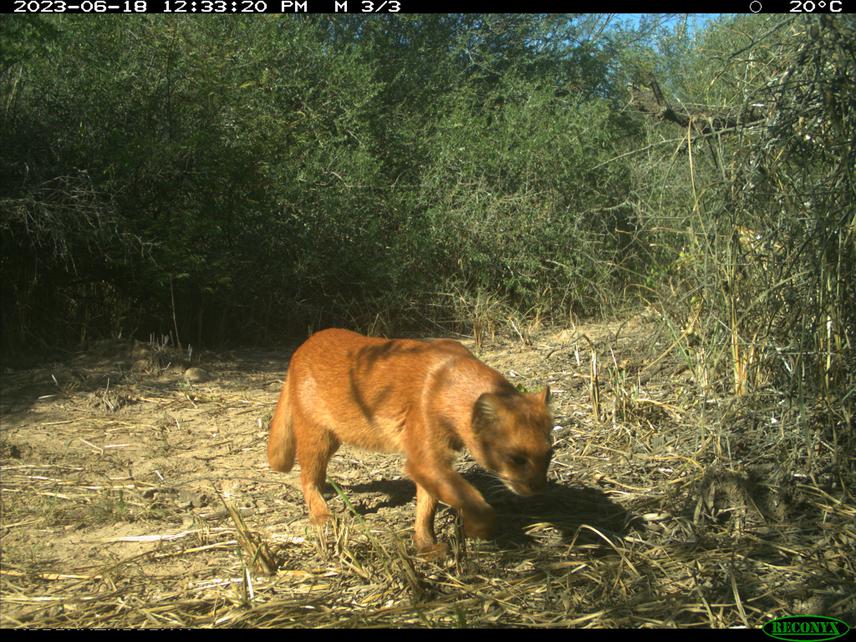Julia Paulucci
Carnivores are suffering significant population decline worldwide. In the Argentinean dry chaco, the protected areas are still not enough to protect their most representative species. Córdoba province represents the southernmost limit of this region, and its forests are being threatened by the expansion of the agricultural frontier. In the province of Córdoba, where the remaining forest represents only 3% of the original cover, it is crucial to conduct studies that consider an entire community in order to gain an accurate understanding of the ecosystem's state. The recently created -2022- Ansenuza National Park is an immense wetland considered a key site for biodiversity. Ansenuza is the largest salt lagoon in South America and the five in the world and its surroundings preserves one of the last patches of forest of dry chaco in the north of Córdoba, in an advanced productive matrix with high rates of deforestation for livestock and agricultural expansion.

Herpailurus yagouaroundi. © Julia Paulucci.
The objective of this research is to comprehensively analyse the anthropogenic factors that influence the conservation and structure of carnivore assemblages in areas with varying degrees of human impact and protection levels, using camera traps. Through this study, we hope to find out how human activities specifically affect carnivore richness and diversity. Moreover, the research seeks to examine the impact of human activities on species interactions and temporal patterns.
This study holds significant implications for the conservation of threatened carnivore species at the national and provincial levels. It will provide a complete description of the carnivore assemblage in relation to human presence and productive activities surrounding the new national park, thus allowing to identify key areas for carnivore conservation at the local level. This research is particularly relevant in light of the conservation corridor established by the national and provincial reserves by better understanding the ecological dynamics of carnivores and their relationship with protected areas.
My key conservation action is to provide crucial information that will be used in the management plans of protected areas and It will be possible to identify conflict zones where the abundance of carnivores or a particular species is affected and take necessary actions to reduce this threatened. With the results obtained is also possible to generate educational programs by sharing the data with schools and local governments. By shedding light on the factors that positively and/or negatively impact carnivore conservation, this study will serve as a catalyst for enhancing conservation endeavours in the future.
Header: Chrysocyon brachyurus. © Julia Paulucci.